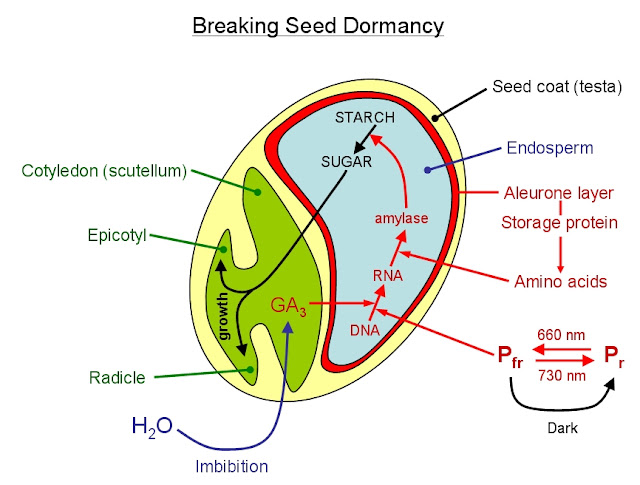New Update Multiple Cropping (Sequential cropping, Intercropping) and Favourable impact of multiple cropping
B.Sc.Ag. (Hons) Part-I Agronomy
 |
| Multiple Cropping.https://cststudy.blogspot.com/ |
Multiple Cropping
Polyculture is the cultivation of more than two types of crops grown together on a piece of land in a crop season for instance, cow-pea+banana+guava, litchi + papaya + tuberose + soyabean, mango + pineapple + turmeric under agri + horti + sylvipastoral systems.
Dual culture is the cultivation of two types of crops grown together or two types of enterprises on a piece of land in a crop season such as rice+fish, rice+azolla.
Monoculture is the cultivation of a single crop in a given field in a crop season such as rice, jute, sugar cane, cotton, tobacco, potato or green gram.
Monocropping is the cultivation of a single crop in a given field season after season or year after year such as rice, jute, sugar cane, cotton, tobacco, potato or green gram.
Multiple cropping: It is the practice of growing two or more than two crops on the same field in a year. Multiple cropping involves intensification of cropping in temporal and spatial dimensions. Multiple cropping is a philosophy of maximum crop production per area of land with a minimum of soil health deterioration. The philosophy is based on the concept that:
i. the high production is good for the soil;
ii. the minimum tillage promotes soil tilth and conserves soil organic matter thus resulting in good physical conditions;
iii. the cover in the form of living mulch is a protection against all forms of erosion and weeds;
iv. residues of manures and fertilizers can be properly utilized
v. the successive crop provide an opportunity for the efficient utilization of land, labour, capital and other available resources;
vi. there is scope for higher production with a higher rate of out turn.
When the form or operational holding as a whole is considered, the multiple cropping index (MCI) is determined by the total area planted divided by the total arable (culturable) area. When the value is three or more it is said to be a most promising farm. This is also called intensive cropping. In the most effective ways, multiple cropping is divided into two major categories-
a) Sequential cropping
b) Intercropping.
a) Sequential cropping: Growing two or more crops in sequence on the same field per year is called sequential cropping. The succeeding crop is planted after the preceding crop has been harvested; crop intensification is only in the time dimension; there is no intercrop competition. Farmers manage only one crop at a time in the same field. Four types of sequential cropping are generally practiced. They are:
i. Double cropping: growing two crops per year in sequence, for instance, rice followed by wheat or potato or mustard; maize followed by groundnut; wheat followed by cotton. Under this situation cropping intensity is 200 percent.
ii. Triple cropping: growing three crops per year in sequence (or in succession) in a field in a year so that cropping intensity is 300 percent, for instance, rice-potato-rice; rice-potato-cow pea or cow pea-mustard-jute.
iii. Quadruple cropping: growing four crops per year in sequence
iv. Ratoon cropping: cultivation of crop regrowth after harvest, although not necessarily for grain.
b) Intercropping: Growing two or more crops simultaneously on the same field is called intercropping. Crop intensification is both in temporal and spatial dimensions; there is intercrop competition during all or part of crop growth period. Intercropping is an old practice used by subsistence farmer especially under rainfed condition. It helps in arranging balanced diet, reduces labour peak and minimize crop failure risk. It has also been suggested that intercropping reduced the adverse effects of pest, provide higher returns and protect soil against erosion. Intercropping may also be of four types:
i. Mixed intercropping: growing two or more crops simultaneously with no distinct row arrangement.
ii. Row intercropping: growing two or more crops simultaneously; one or more crops planted in rows.
iii. Strip intercropping: growing two or more crops simultaneously in different strips wide enough to permit independent cultivation but narrow enough for the crops to interact agronomically.
iv. Relay intercropping: growing two or more crops simultaneously during part of the life cycle of each; a second crop is planted after the first crop has reached its reproductive stage of growth hut before it is ready for harvest.
Favourable impact of multiple cropping: Modern intensive cropping systems have created the following favourable impact in Bangladesh:
i. Improved stability of food and feed supply throughout the year;
ii. Increased productivity per unit area, time, input and total production accompanied by an increase in the total income of the farmer;
iii. Improved distribution of income throughout the year with quick out turns and thus an increased possibility of recycling working capital;
iv. Increased total employment and distribution of labour and other capital use throughout the year and opportunities for on-farm seed production, preservation, processing and marketing.
v. Minimized the scope of soil erosion and degradation;
vi. Maximized the possible utilization of land, residual effects of manures, fertilizers, moisture and management practices;
vii. Minimized the rental value, irrigation charge and other imputed costs per unit of production;
viii. Broadened the scope to select and substitute crop varieties matching the agroecological situation, the cropping pattern and programmes based on home requirements and market competitions;
ix. Extended the possibilities of almost complete removal of weeds as reduced fallow period minimizes the reproduction of weeds;
x. Improved the nutrition for the farm family from crop diversification;
xi. Created employment opportunity of farm labourers and others related to processing and marketing of agricultural products.
Adverse impact of multiple cropping: Due to intensive cropping, unfavourable effects have been observed in terms of nutrient mining and health of soil resulting in soil degradation if proper crop management practices were not followed.
If you can't understand something please comment below...



Comments
Post a Comment